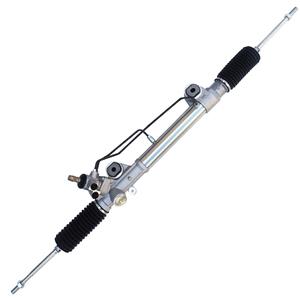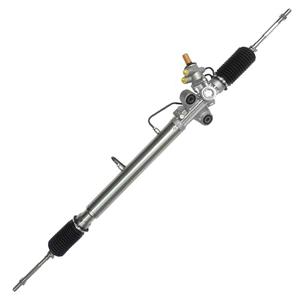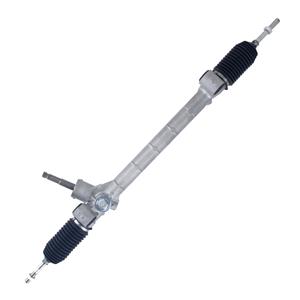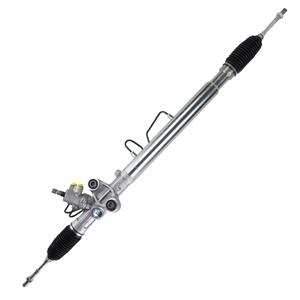Is it normal for your car's power steering fluid to be low?
The power steering system is one of the essential components of modern vehicles, which allows drivers to maneuver their vehicles more easily by providing additional steering assistance. In the power steering system, power steering fluid plays a vital role. It transmits hydraulic pressure, lubricates components, and maintains normal operation within the steering system. Therefore, maintaining the proper level of power steering fluid is essential to the safety and operability of the vehicle.
However, many car owners may notice a drop in the power steering fluid level during routine maintenance. Is this normal? What does low power steering fluid mean? This article will explore this phenomenon and explain the reasons, possible consequences, and how to deal with low power steering fluid.

What does power steering fluid do?
Before understanding whether it is normal for power steering fluid to be low, we must first understand its role in the entire power steering system. The power steering system mainly relies on hydraulic pressure to provide steering assistance to the driver, and power steering fluid is the core medium of this hydraulic system. The main functions of power steering fluid include:
1. Transfer hydraulic pressure: The hydraulic pump in the steering system uses fluid to transfer pressure to the steering rack or steering box, helping the driver to generate power when turning the steering wheel.
2. Lubrication: There are many mechanical parts in the power steering system, including gears, pumps, bearings, etc. Power steering fluid can lubricate these parts, reduce friction, and prevent wear and overheating.
3. Cooling: The fluid circulates in the power steering system and also plays a role in taking away heat, thereby preventing the system from failing due to overheating.

What causes low power steering fluid?
A drop in the power steering fluid level is usually an abnormal phenomenon, which means that there may be some problems within the system. Under normal use, power steering fluid is a closed system, and the fluid should remain at a stable level and will not be easily consumed or reduced. If the power steering fluid level is found to be low, there may be several reasons:
Leakage
This is the most common cause of low steering fluid. Leaks can occur in multiple parts of the power steering system, including hoses, pumps, reservoirs, power steering racks, etc. Fluid can leak from damaged seals, aged hoses, or worn connections, causing the fluid level to drop. Leaks can be due to several specific reasons:
● Aged seals: Rubber seals in the steering system can age, harden, or crack over time, which can cause fluid to leak.
● Broken or loose hoses: If the hose connection in the steering system is loose or the hose itself is broken, fluid can leak.
● Pump shaft leaks: Damaged bearings or shaft seals inside the steering pump can also cause leaks, especially if the seal near the pump shaft fails.
Power steering fluid evaporation
Although this is rare, power steering fluid may evaporate slightly in extremely hot environments, especially during long periods of intense driving. Although the evaporation of fluid will not cause a noticeable drop in the fluid level, it may cause the fluid to gradually decrease in special circumstances.
Improper refilling
Another potential cause of low steering fluid level may be related to improper refilling. For example, the power steering fluid was not filled at the last service, or the relevant level mark was ignored during the refilling process, resulting in a consistently low level.
Air is sucked into the system
If the steering system is not well sealed, air may enter the system, causing the fluid to be compressed, so that the fluid level appears to be reduced. This phenomenon is usually accompanied by problems such as insufficient steering power and abnormal noise when steering.
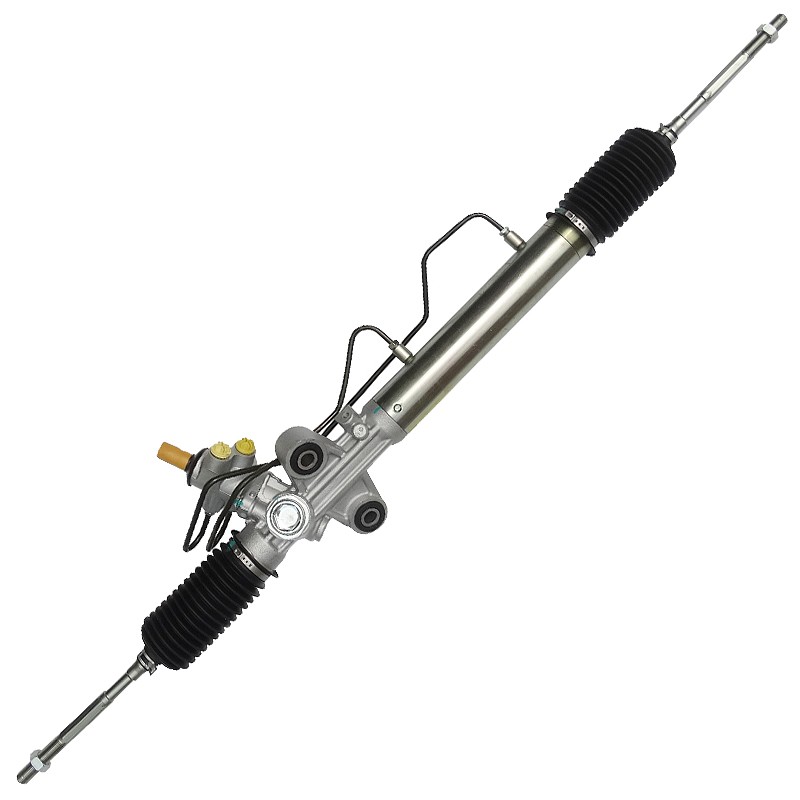
What are the consequences of low power steering fluid?
Low power steering fluid is not only a warning sign, but it may also lead to more serious consequences if the problem is not dealt with in time. Here are a few major problems that may occur when the power steering fluid is low:
Difficult steering
The most direct effect of insufficient power steering fluid is that the vehicle becomes difficult to steer. When the fluid is reduced, the pressure in the hydraulic system will drop, resulting in a decrease in steering power. The driver will feel that the steering wheel becomes unusually heavy, especially at low speeds or when parking. This situation not only makes driving more difficult, but also increases the danger of driving, especially in emergency situations.
Damaged power steering pump
The steering pump relies on fluid to generate hydraulic pressure, but also relies on fluid for lubrication and cooling. If the power steering fluid level is chronically low, the pump will have to work without lubrication and heat dissipation, which will cause excessive wear or even complete damage. Once the power steering pump is damaged, the entire system will not work properly and the repair cost will be quite high.
Increased system noise
When the steering fluid is low, air may be sucked into the system, causing the steering pump to make a "whining" or "clicking" sound. This is because the air is compressed in the pump, affecting the normal operation of the system. This abnormal noise is not only annoying, but also a warning sign that the pump is stressed and damaged.
Damage to the gear rack or other components
Components such as gears and bearings in the power steering system need steering fluid to lubricate and protect them. When the fluid level is low, the friction between these parts increases, causing excessive wear and even damage. The gear rack is one of the most expensive and complex components in the system, and once damaged, it is very expensive to repair.
What is the correct way to deal with low power steering fluid?
If you notice that the power steering fluid level is low, the owner should take immediate action to prevent further damage. Here are the correct ways to deal with this situation:
Check the fluid level
Owners should check the power steering fluid level regularly, especially if they notice that the steering becomes heavy or hear unusual noises in the system. Checking the fluid level is usually simple: open the hood of the vehicle, find the reservoir of the steering fluid (usually in a conspicuous place in the engine compartment), and observe whether the fluid level is within the marked normal range.
Check the leak location
If the fluid level is significantly reduced, the owner should check the bottom of the vehicle or the engine compartment for signs of power steering fluid leakage. Steering fluid is usually red, yellow or green, depending on the type of fluid used. Common leak locations include the power steering pump, hose connections, and around the gear rack.
Add the right power steering fluid
If the fluid level is below the normal range, the owner can temporarily add an appropriate amount of power steering fluid to ensure that the system can operate normally. However, it should be noted that adding fluid is not a fundamental solution to the problem. If the source of the leak is not found and repaired, the fluid will continue to leak.
Timely repair
Low power steering fluid level usually means that there is a problem somewhere in the system. Therefore, the owner should take the vehicle to a professional repair station for inspection and repair as soon as possible. Only by repairing the source of the leak can the long-term normal operation of the power steering system be ensured.

What are the ways to prevent low power steering fluid?
To avoid problems caused by low power steering fluid, car owners can replace the steering fluid regularly and check system components for signs of wear or aging as required by the vehicle manual. Secondly, the seals in the power steering system are prone to aging due to long-term use. Car owners should check these seals regularly and replace them when necessary.
In addition, hoses are one of the most vulnerable parts in the power steering system, especially those that are exposed to high temperature and high pressure environments for a long time. Check the status of the hoses regularly and replace them in time if there are cracks or wear. Finally, under extreme driving conditions (such as frequent sharp turns and high-speed driving), the load on the power steering system will increase, and the consumption and wear of the fluid will also increase. Car owners should adjust their driving habits according to actual conditions to reduce the load on the power steering system.
Since 1996, Guangdong Diamond Auto Parts Co., Ltd. has been a trusted Chinese manufacturer of power steering systems, specializing in high-precision products for global automotive brands. Our 20,000-square-meter factory produces over 300,000 units annually, utilizing over 280 advanced machines and fully automated production lines. From gear rack steering for Toyota and Hyundai to hydraulic systems for Mitsubishi and Honda, we provide affordable solutions for distributors, wholesalers, and OEMs. Enjoy factory-direct pricing, bulk discounts, and customized services tailored to your needs.

